 Facebook
Facebook
 X
X
 Instagram
Instagram
 TikTok
TikTok
 Youtube
Youtube
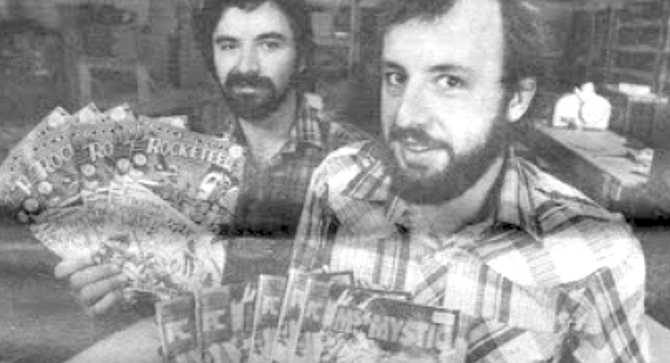
In June of 1974, when Steve Schanes was twenty years old and Bill, his brother, was fifteen, they opened their first store, on Cass Street in Pacific Beach, to sell old and new comic books over the counter and through the mail. They lived with their parents, their brother, and two sisters in a ranch-style house on San Joaquin Drive, a side street on the hill that rises to Mt. Soledad, the one above La Jolla with the cross on top.
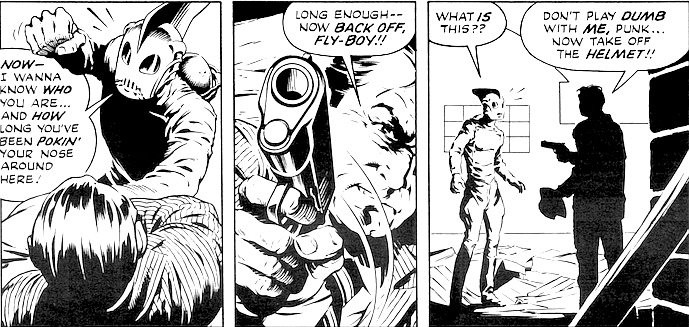
The Schanes family (pronounced shay-ness) had moved there in 1967 from Upper Montclair Heights, New Jersey, a suburb of New York City. To accommodate all seven members of the family, the Schaneses converted the garage into bedrooms for Steve and Bill. Their bedrooms were peculiar even for teen-agers. Entering from the front hallway and passing, on the left-hand side, the washer and dryer, one saw on the right twin rooms, each with a twin bed in it, and in front of each bed a narrow pathway providing access to the door, and everywhere else — comic books. Fourteen thousand of them loaded on racks against the walls.
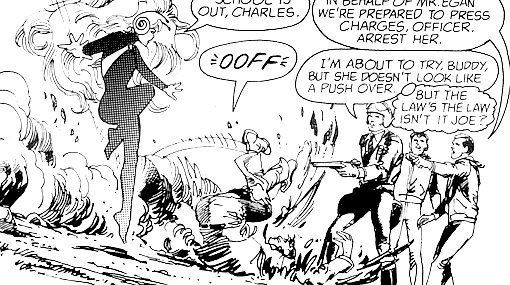
This collection had grown from a whimsical purchase that Steve had made three years before in the company of Bill at the Santee swap meet, where they often went on weekends. They were a team: Steve the talker, with an intuitive sense for a bargain, and Bill with a head for figures and a skill at negotiation that seemed to arise from his not being awed by bluster or authority. On this last point the family has a favorite story.
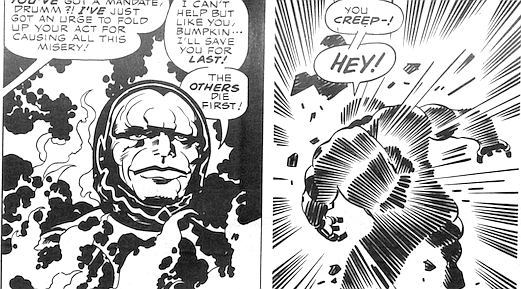
During the Nixon Administration they lived briefly near Washington, D.C., where father Schanes was the assistant director of policy for the commerce department. One Sunday Bill answered the phone. It was the White House calling for his father. Bill told whoever was on the phone that his father was asleep, and then he hung up. Steve’s particular skill, his glibness, appears to be his compensation for a childhood ailment — dyslexia, or word blindness, which is a neuromotor condition that presents an otherwise normal child with words that appear backward on the page, and with other baffling messages from the message-ridden world.
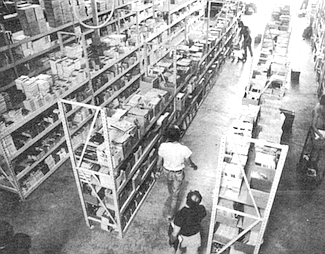
At the age of seven, a second-grader, Steve locked himself in the bathroom of the family home in New Jersey because he had just been notified that he had flunked. The report card carried a stinging red line of F’s. While he cried in the bathroom, considering suicide via the sliding glass window and the drop to the pavement one story below, his mother on the other side of the door said she loved him. His father later took him aside and told him a few of his own experiences of failure. His parents knew the boy was all right — he could bid and make sixes in bridge; he could certainly pass the second grade.
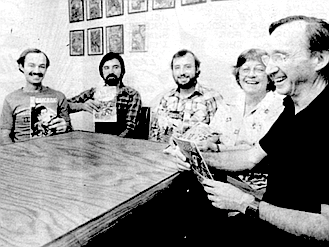
Moreover, his father is a touch dyslexic too: he gets lost when he jogs an unfamiliar route. They hired Steve a tutor, but for years his progress in school was slow. Baseballs hit him in the face. Life hurt. But he continued to develop the aptitudes that his family found in him. He was always the buyer in family enterprises, as when they went to the Christmas-tree lot every year. Once Steve came home with two trees — he could not pass up a deal. They trimmed one and broke the other up for wreaths.
Together the interests of Bill and Steve amounted to a single hobby: to search for large amounts of anything whose price was cheap, and to bargain for a price yet cheaper. At the swap meet they came upon 900 comic books on sale for fifty dollars. Steve had read a few Marvel comics as a boy in New Jersey; he recalled lending some of his Metalmen serials to his sisters, who had lost them. Since then his interest had dwindled to nil, but now it was aroused once more.
He bought them, brought them home, sorted them by maker — Marvel and D.C. were then as now the most prevalent brands — and soon made his first sale, to brother Bill, who bought the Marvels. The boys then joined the nascent San Diego Comic Book Club, which convened some of its meetings in the Schanes living room. Richard Alf, Richard Butner, Barry Alfonso, and Shel Dorf were some of the members. Dorf is now the lifetime president of the San Diego Comic Convention, considered one of the two most complete conventions in the country. (The other is Chicago’s.) The members traded comics or shared information on comics, while between the meetings the Schanes brothers operated a mail-order business in used comic books, which they advertised in a sixty-dollar, one-half-by-two-inch announcement in the current publications of the Marvel Comics Group. The announcement read: “Comic books cheap. Send for free catalogue.’’ Seeking inventory for their new business, the brothers scouted classified advertisements, swap meets, and garage sales, sometimes taking their father along when they felt they might need a capital loan. They sorted newly acquired collections on the living room floor and stacked the assortments of books in their rooms. One stack might contain Adventure Comics and another Classics Illustrated. Steve said that he and his brother took charge of certain stacks and competed in seeing whose mounted the fastest. Their mother, he added, used to push the vacuum cleaner into their rooms and knock the stacks down, until the boys’ mailorder business began to bring in money. “Then she had respect for comics,’’ he said. “No more knocking them over.’’
When at last there was no more space for comic books in the boys’ bedrooms, they decided to open a store. Their mother approved of the venture. Her parents, she said, had been living examples of the value of hard work, her father as a vegetable wholesaler in Jersey City and her mother as a housewife, and she had sought to impress those values on her own children — together, of course, with some of the pleasures of life, such as classical music, which she turned on every evening before the children went to bed. They heard it through high-fidelity speakers that their parents had installed in each room.
The store at 5011 Cass, near Loring, has 750 square feet of brown linoleum floor, and windows facing the street from the shadows of twisted junipers. Now under different ownership, it is called The Comic Gallery, but when the Schanes brothers opened it, they chose the name Pacific Comics. The rent in 1975 was $200 a month; this and the twenty-five-dollar fee for the business license comprised their capital outlay. There was no cash register; accounts were kept in a spiral notebook. Neither was there a calculator. The comic books fit nicely in cast-off hosiery cartons, which were arranged on tables against the walls. Above were Frank Frazetta posters of science-fiction gothic. Mrs. Schanes ran the store in the daytime while her sons attended University High School. Steve and Bill worked after classes, paying themselves nothing, and their mother nothing, and putting a few other employees who were youngsters like themselves on a salary of comic books — seventy-five cents an hour redeemable in merchandise off the rack. Being of age to hold an outside job, Steve also worked nights at the 7-Eleven convenience market on Garnet Avenue. He earned seventy dollars a week and spent it on new comics at the Paras Newsstand at Thirtieth and University in North Park. Either the new comics would fill out the inventory of current publications on the Pacific Comics racks, or likely among them were collectible first editions, which Steve would slip into plastic preservative covers and store like wine awaiting ripeness, and with a hearty markup of 200 percent.
The store was profitable. After a few months. Bill had $1200 in cash and checks to be deposited in a bank. His father took the dark, quiet, fifteen-year-old to his banker at U.S. National (now Crocker Bank), and said, “This is my son Bill, who wants to open a checking account for his company in Pacific Beach.”
The banker said, “Right. You bet. Now Dad, if you will please fill out these forms ...”
And Schanes said, “No, you don't understand. The account is for my son’s business — not mine, my son’s.”
Then Schanes turned to Bill and said, ‘‘You’d better show him the checks.” He did; the banker took him away to a room, and that was the last Schanes saw of them until Bill came out with his new checkbook in hand.
It can’t be surprising that an adolescent should prompt little respect from a banker, nor that comic books, typically considered kids’ stuff, should have so little value for most adults. They may nonetheless have money behind them. The comic books in the size and shape with which most of us are familiar were first published in 1933 by the Eastern Color Printing Company of New York. Two of its salesmen, Harry I. Wildenberg and Max C. Gaines, noticed that a newspaper syndicate published a sheet of Sunday funnies from seven-by-nine-inch plates, two of which could fit on a standard tabloid page, which, when folded, produced a book of about seven-and-a-half-inches by ten inches. The salesmen collected several reprints of popular comic strips, such as Mutt and Jeff, Joe Palooka, and Reg’lar Fellas, and included them in the first edition of Funnies on Parade, which they sold to Proctor and Gamble as premiums. These were so popular that Max Gaines in the following year began to publish a monthly series. Famous Funnies, which sold for a dime and ran through 218 issues in twenty years. Other companies rose to compete; one of these was Detective Comics, whose initials, D.C., came to stand for its owner since 1937, National Periodical Publications. D.C. produced the most famous series of all. Superman, written by Jerry Siegel and penciled by Joe Shuster, the latter discovered by Max Gaines. Selling for a dime in its premier issue, Superman No. 1 is valued in the current Overstreet’s Price Guide at $9000 in mint condition, $4500 fine, and $1500 good.
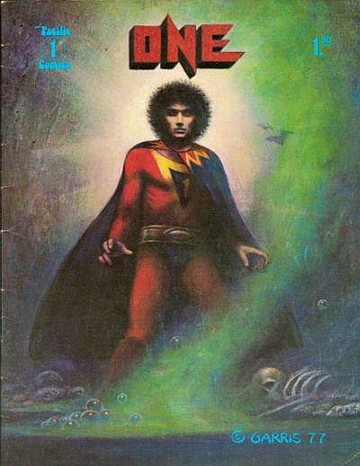
Collecting comic books became popular in the last two decades, owing to a cultural interest in the mass arts (collecting Coca-Cola bottles and paraphernalia rose in popularity at the same time), and also because comic books, like stamps, were within the means of any hobbyist. Cheap to begin with, comics stayed cheap even when they soared in price. Thus they were easy to collect and profitable to sell. Steve Schanes said that during the first few years of the operation of Pacific Comics, he and his brother literally bought truckloads of comics that pulled up to their door. He said they might buy one lot of comics for a dime apiece — $300 for 3000 comics — and after culling the lot, find individual issues worth two or three dol lars each. Few of the issues could carry such a markup, of course, but the store on any of its best days brought in $200 gross, almost none of which was subject to sales tax, from which periodicals are exempted. With little overhead in labor, equipment, or rent, Pacific Comics was profitable enough to help put Steve through college (he attended the Cleveland Institute of Art for one year but left, disliking the weather and the neighborhood, and completed his bachelor of arts at the Otis Art Institute in downtown Los Angeles, with his primary interest in sculpture), and moreover the business made enough money to fund the establishment of three more stores, all the while increasing its inventory to the point where its mail-order service for used comic books became what Dave Scroggy, the stores’ general manager, reckoned to be the third or fourth largest in the country. In 1979 the Schanes brothers owned half a million comics, which that year brought a real-market price of $200,000.
The first branch store was near State College (on Montezuma Road), the second in Clairemont, and the third in Oceanside. Of these only the Clairemont store was profitable. In Oceanside Steve Schanes felt he was being blackmailed by a building inspector who demanded petty improvements before granting the necessary permits, and he was obliged to fire a crew of shop employees on the suspicion that one of them had led a burglary on his inventory. The State College store was far too expensive for the money it brought in; Steve estimated a cost of $150 a day versus an income as low as fifty dollars. In a shopping center with a McDonald's franchise, the store’s location was good; there was plenty of foot traffic. But the inventory was not abundant or varied enough for the clientele. “People walked in and saw empty shelves,’’ said Steve.
College students were not interested in old comic books, they wanted up-to-date fantasy material: posters, science-fiction paperbacks, color portfolios, foreign comics, comic trade journals (called “fanzines”), Mr. Natural and other underground comics, art anthologies, cartoon histories, calendars, the Marvel and D.C. serials — all the inventory that might be called the illustrations of popular imagination. No lack of these materials was evident in the suppliers’ market, and the demand was there in the buyers’ market as well. As the Schanes brothers saw it, their problem was a failure in the distribution system — called the “I.D.” system, for independent distributor.
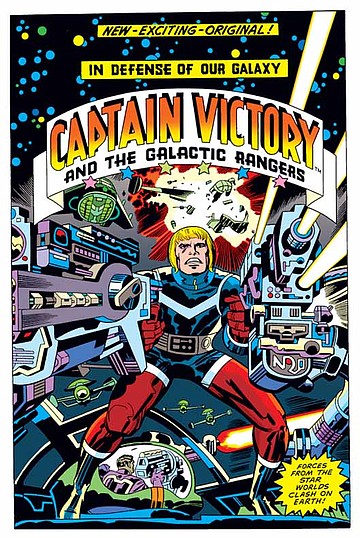
Traditionally an independent distributor buys printed materials from all kinds of publishers and distributes them to all kinds of retailers. What the retailer doesn’t sell goes back to the distributor, who either shreds it or returns it to the publisher; either way the retailer gets a credit toward the purchase of new issues from the publisher. The system encourages diversity, an important factor in the retailer’s business. Not being out-of-pocket for issues that don’t sell, the retailer can easily be persuaded to try a new line of magazines. The store rack always looks alive with new titles and subjects.
But fantasy materials, especially comic books, do poorly in the system because they are comparatively under-priced. An ordinary Marvel serial of thirty pages sells for sixty cents. Penthouse sells for three dollars and Reader’s Digest for $1.25. The retailer's profit of twenty percent yields sixty cents for the Penthouse sale, compared to twelve cents for the Marvel. The storekeeper has little interest in carrying the comic book, the distributor has little interest in promoting it.
And Penthouse and Marvel do compete for about the same readership. Scroggy, who was the general manager at Pacific Comics, said most customers for fantasy material are between the ages of eighteen and thirty-five. Some children and adolescents buy comics, but these groups appear to be more interested in video games. Scroggy said that since the 1950s, when the comic-book industry nearly expired under the bad press of a bestselling book, The Corruption of Innocents, which attacked the content of comics in the same way that consumer groups have attacked the prevalence of violence and sex on television, the industry responded first by writing a self-imposed code of ethics (immediately circumvented by the comic books that switched to the magazine format; the most famous of these is Mad), and secondly by changing the emphasis of comic book stories, downplaying bloody violence in favor of character development. The superheroes of comic books today are softer than the old-time men of steel. Shel Dorf, the president of the Comic Convention, said comics “used to present everything in pure black and white — pure good guy, pure bad guy. But then in the 1960s there came to be tremendous shades of gray” — as when Spider Man, a college student, felt wounded because he wasn’t as popular as a football player.
Said Scroggy, who graduated from Kent State University in 1972 and was a poetry fellow at the Provinceton Foundation in Massachusetts, “I’m constantly amazed at who reads comics. I mean — I do.” To provide enough inventory for collegiate readers, and to improve the profitability of Pacific Comics while incidentally forgoing the hassles of doing business in Oceanside, Steve Schanes one night proposed a new arrangement to his brother. They would liquidate all four retail stores and go into wholesale distribution. The idea made sense: They knew the fantasy market better than any independent distributor who carries hundreds of magazines of all kinds. With the credit and goodwill they had long established as retailers, they could buy directly from the comic book publishers and distribute materials to fantasy shops in exactly the quantities they required. There would be no more wasting of unsold issues on the shelves. They would mail catalogues to the fantasy shop owners, as they had always done to customers in their mail-order business, and the shop owners would call for the delivery of as many issues of Brain Fantasy, Fantastic Four, and Superboy as they felt confident their customers would buy. Absorbing no loss on unsold copies, the Pacific Comics Distribution Company could offer a sweet incentive: a forty-percent profit to the retailer instead of the usual twenty. ‘‘They make money, we make money, and there’s no waste — no unsold issues, no shredded paper, no chopped-down trees,” said Steve.
Bill saw promise in the idea. Although the four stores as a whole made enough money to pay the overhead with some left over for increasing the inventory of old issues, which supplied the high-profit mail orders, the actual profit for the business, on which he declined to be specific, was only marginal. But the risk in becoming a distributor was based on whether the retail market would grow. Aside from the State College store, the market seemed strong in San Diego; there were fantasy shops in Hillcrest, Poway, and Santee. And judging from mail-order sales to other retailers and from information gathered at comic conventions, the national market seemed to have grown from about 400 fantasy shops in 1974 to 1200 in 1979.
As a distributor the Schaneses would once again be able to group their inventory and employees in one location, and stop the expensive driving they’d had to do in recent years.
“It was an easy decision,” said Steve. “I was in bed one night, totally bummed out about the store in Oceanside and thinking about the State College store. Distribution seemed like the logical move. The next morning I talked to Bill about it” — they shared at this time, 1979, a duplex property owned by their father on Felton Street in North Park — “and he agreed right away. We’d been in the business a while and we just felt it was time to change.” Steve was twenty-five years old that year. Bill twenty-one.
As Steve says, they “imploded” the business, selling all four stores for slightly more than $200,000, most of that in inventory, and established the new business in 2200 square feet on Ronson Court, Kearny Mesa. The transition was gradual, taking about a year, and not very difficult, since, as anticipated, the retail trade continued to expand in San Diego and elsewhere. These fantasy stores were single, independent businesses that responded to the specialized attention of distributors such as the Schanes brothers. In a year Pacific Comics had taken another 2200 square feet of warehouse, and had a gross income of $750,000.
At the same time, the business was moving into publishing, slowly at first, starting with the production of art portfolios, which were signed and numbered reproductions of full-color paintings by popular artists, commissioned by the firm of Schanes & Schanes. A portfolio contained from four to six reproductions and sold for thirty-five dollars at most. Expensive, limited, the portfolios gave the Schaneses the means to publish in a small portion of the market; in effect it allowed them to learn something about publishing, about dealing with artists and printers, without exposing themselves to much loss.
Distributing comic books, portfolios, fanzines, and other kinds of materials showed them further that the fantasy market was capable of absorbing more products. In fact, the more popular comic books were always in short supply, since Marvel and D.C. were now feeding two distribution systems: the independents, and the so-called direct-sale distributors, of which Pacific Comics was only one of about fifteen in the country that had come into existence during the previous few years.
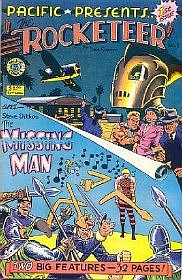
In 1980 Steve shrewdly suggested a way to increase the supply of comic books. At the San Diego Comic Convention he stood up in a meeting with representatives of the Marvel Comics Group and asked if the company would create a comic book for sale exclusively to fantasy stores, and exclusively for distribution by the so-called direct-sale companies such as his own and others represented in the room. “Ten thousand dollars,” he said, “that’s all you guys have to lose. A multimillion dollar company; come on! You can handle it. Let us show you that we can sell the product. I mean — let us make a profit for you. We want to make a profit for you. What’s ten thousand dollars?”
The following March the Marvel company produced Dazzler, a science-fiction adventure comic whose first issue sold an astonishing 400,000 copies in fantasy stores alone. This was twice the number that normally rings up as a hit. Of these. Pacific Comics sold about 28,000. “The real impact of Dazzler was sort of like what happened at Woodstock,” said David Scroggy. “You had all these direct-sale stores [fantasy shops] all over the country: one in this town, two in that town; and they were just out there, you know, like hippies, functioning but strange. Then came Woodstock and all the hippies looked around and said, ‘I never knew there were this many.’ When Dazzler sold 400,000, suddenly all the direct-sales stores were a market, a bona fide market.”
Dazzler's success had another meaning for Steve and Bill Schanes. It showed that a new comic book, it if was good, could immediately become a hit. Direct-sale distribution eliminated any need for the publisher to persuade the independent distributors to carry a new magazine. Pacific Comics and other distributors like them were already in close alliance with the fantasy stores. And if Pacific published its own comic, it also owned the means to publicize it via its sales catalogue.
So it seemed there remained only for the Schaneses to publish their own comic book and see what happened. But how to attract pencilers and writers away from New York? As with the distribution system, here again the set-up of the comics industry gave the Schanes brothers a weakness to exploit. It was the refusal of Marvel, D.C., and other publishers to share the rights of ownership with the persons who wrote and drew their comics. Writer Jerry Siegel and artist Joe Shuster were both seventeen years old when they invented the Superman character in 1939. Unable to sell their idea to the comic-strip syndicates for publication in newspapers, they signed a standard contract with D.C. comics by which they relinquished all rights of ownership. Later when Superman and its sequel Superboy had made fortunes for D.C., Siegel and Shuster sued for their rights of ownership; they lost in the case of Superman but won a partial victory with Superboy, as they had proved that D.C. had used Siegel’s idea for the Superboy character without his knowledge or consent. (Siegel was fighting in World War II when the Superboy comic first appeared.) They won a settlement of $400,000 and after paying their lawyer and taxes they ended with about $50,000 each. Thereafter they could not find work in the comics industry. Siegel became a postal clerk and Shuster retired to live with his brother in Queens, New York.
When D.C.’s copyright expired in the early 1970s the creators sued again and lost. Neal Adams, then president of the Academy of Comic Book Arts, mounted what he called “a small campaign” on behalf of Siegel and Shuster, and eventually persuaded D.C.’s parent company, Warner Communications, to award them lifetime payments of $30,000 a year, together with the stipulation that their names would appear forever on Superman and Superboy comic books.
By 1980 no other writers or pencilers had succeeded in obtaining a similar reward for the characters they had helped to create, and some of them resented it.
Jack Kirby, whose work began to appear in 1935, and who co-created such Marvel heroes as Spider Man, the Hulk, and. Captain America, quit working for the company in 1977. He said on the telephone from his home in Thousand Oaks, “I don’t think you can deal with the so-called mainstream producers of comics because you are going to get cheated in some manner. Where’s the incentive?” he asked. “If you’re not allowed to share in the profit, the incentive is taken away.”
About two years ago the Schanes brothers announced to acquaintances in the comic business around the country that Pacific Comics would allow writers and artists who worked under the P.C. label to keep the rights of their characters for licensing in television, film, or any other medium. Early this year P.C. announced further that it would pay a royalty of eight cents on the one-dollar cover price of a P.C. “Sparta book” — the industry standard, so named because nearly all comics are printed in Sparta, Illinois — rising to ten cents after the sale of 100,000 copies. A book could be expected to sell at least 75,000 copies for a royalty of $6000. A book selling 150,000, which is about the average for a Marvel comic, would return $13,000 in royalties. And one that sold as well as Dazzler's first issue would pay more than $30,000.
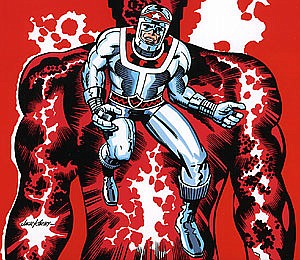
The first to sign with Pacific Comics was Kirby. In November of 1981 P.C. published his Captain Victory, which has since been licensed for reprinting in seven foreign countries. (As an option Pacific offers to represent the artist in foreign sales for a thirty-five percent commission on revenues.) This year with the addition of royalty payments, Kirby received about $6000 for the sale of Captain Victory"s third installment, which sold 85,000 copies. Kirby has since produced five more installments, and this month comes out with a new series, Silver Star. Other comics now published by P.C. are Ms. Mystic by Neal Adams, Starslayer by Mike Grell, The Rocketeer by Dave Stevens (from National City; he moved to Los Angeles in 1977), The Missing Man by Steve Ditko, and beginning in October, Groo the Wanderer by Sergio Aragones, the cartoonist for Mad Magazine.
These P.C. comics are hardly visible in the throng of competing titles in a fantasy store. Comic Kingdom on University Avenue in North Park, for example, carried Starslayer and Captain Victory in mid-September, but one had to ask for help in finding them amid the titles from Marvel and D.C. Pacific Comics nonetheless has affected the industry in a different way with its new line of comics. Last year for the first time. Marvel and D.C. agreed to begin paying royalties to their artists — about five percent of their sixty-cent cover prices, after the first 100,000 copies sold. Bruce Jones of Coronado, who writes the scripts for Marvel’s Conan the Barbarian comic books, said that if not for the innovation of Pacific Comics, he would never have been offered a royalty from Marvel. Pacific’s royalty has also attracted Jones and his co-writer, April Campbell, to produce a thirty-two-page anthology of horror stories called Twisted Tales, which will be distributed by P.C. in December. During the week of September 13, P.C. printed 525,000 comic books under its own name.
In the coming year the Schanes brothers hope to achieve the publication of twelve comic book serials. The sale of these comic books, together with the sale of hundreds of items the company distributes for other fantasy publishers, should bring in a gross of five million dollars, compared to $3.5 million this year and $1.2 million last year. In July the business moved to a 17,000-square-foot warehouse on Production Avenue in Kearny Mesa, within sight of Miramar Naval Air Station, and this year the company paid $50,100 for a firehouse in Steeleville, Illinois, which it has converted to a warehouse for the comic books produced at nearby Sparta. P.C. also has a warehouse in Los Angeles a few doors away from the Shrine Auditorium for the distribution of materials in L.A. and Phoenix.
Success? “We still drive Volkswagens and Toyotas,” said Bill one morning in the conference room at the warehouse on Production Avenue. In the comer of the room was a large convex mirror that Steve had bought cheap at a sale of Fedmart fixtures.
“Success is having normal business pressures, being able to pay your people, and doing what you like to do,” he said. In August he took his first vacation in years, a week in Hawaii, during which time he shopped for old comic books. Steve, who was married last year and now has a son, took his family on vacation to Niagara Falls to visit his in-laws, and made a side trip to Toronto on comic-book business. For Steve the success of his company seems to have changed his personal life less than his getting married. “When Bill and I lived by ourselves on Felton,” he said, “home was just a messy bed. None of the furniture was worth more than fifty dollars. Everything was a wreck but I didn’t notice. Now, all of a sudden, it’s different. I mean, it’s really nice.” “You take your determination early in life,” said Steve and Bill’s father, Steven E. Schanes, who has a Ph D. in political science from Cornell and who has spent much of his career in teaching and in government service. “I determined early that I would have a large family and be dedicated to it. And so I’ve had no social life outside my family — for better or for worse, I don’t know, but that’s how it’s been.”
Always there to help his boys out of debt when they were still collecting comics in their bedrooms, Schanes was recently hired by Steve and Bill to be the company’s financial vice president, overseeing the line of credit with the Bank of San Diego, and presenting the company to potential investors.
Mrs. Schanes, for all her days at the first store in Pacific Beach, now oversees the office operations at the company, where she is known by her maiden name, Christine Marra. The oldest son Paul, formerly a welder, now works in financial records, and sister Christine, an attorney with Arco Oil in Los Angeles, counsels on legal affairs.
“No matter what’s happening, we will always survive,” said Steve, referring to his company, which now consists of his family (with the exception of one sister, a teacher in Virginia) and thirty-five other paid employees. “We are continually moving, continually changing. Being always short of cash is good for you because it teaches you to use your resources. Which is why I like my philosophy: Never buy anything expensive. Everything in the world will show up cheap; if you are patient, it will come right to you.”
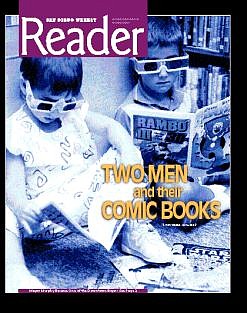
See also: 2004 cover feature "Two Men & Their Comic Books - The Rise and Fall of Pacific Comics"


In June of 1974, when Steve Schanes was twenty years old and Bill, his brother, was fifteen, they opened their first store, on Cass Street in Pacific Beach, to sell old and new comic books over the counter and through the mail. They lived with their parents, their brother, and two sisters in a ranch-style house on San Joaquin Drive, a side street on the hill that rises to Mt. Soledad, the one above La Jolla with the cross on top.

The Schanes family (pronounced shay-ness) had moved there in 1967 from Upper Montclair Heights, New Jersey, a suburb of New York City. To accommodate all seven members of the family, the Schaneses converted the garage into bedrooms for Steve and Bill. Their bedrooms were peculiar even for teen-agers. Entering from the front hallway and passing, on the left-hand side, the washer and dryer, one saw on the right twin rooms, each with a twin bed in it, and in front of each bed a narrow pathway providing access to the door, and everywhere else — comic books. Fourteen thousand of them loaded on racks against the walls.

This collection had grown from a whimsical purchase that Steve had made three years before in the company of Bill at the Santee swap meet, where they often went on weekends. They were a team: Steve the talker, with an intuitive sense for a bargain, and Bill with a head for figures and a skill at negotiation that seemed to arise from his not being awed by bluster or authority. On this last point the family has a favorite story.

During the Nixon Administration they lived briefly near Washington, D.C., where father Schanes was the assistant director of policy for the commerce department. One Sunday Bill answered the phone. It was the White House calling for his father. Bill told whoever was on the phone that his father was asleep, and then he hung up. Steve’s particular skill, his glibness, appears to be his compensation for a childhood ailment — dyslexia, or word blindness, which is a neuromotor condition that presents an otherwise normal child with words that appear backward on the page, and with other baffling messages from the message-ridden world.

At the age of seven, a second-grader, Steve locked himself in the bathroom of the family home in New Jersey because he had just been notified that he had flunked. The report card carried a stinging red line of F’s. While he cried in the bathroom, considering suicide via the sliding glass window and the drop to the pavement one story below, his mother on the other side of the door said she loved him. His father later took him aside and told him a few of his own experiences of failure. His parents knew the boy was all right — he could bid and make sixes in bridge; he could certainly pass the second grade.

Moreover, his father is a touch dyslexic too: he gets lost when he jogs an unfamiliar route. They hired Steve a tutor, but for years his progress in school was slow. Baseballs hit him in the face. Life hurt. But he continued to develop the aptitudes that his family found in him. He was always the buyer in family enterprises, as when they went to the Christmas-tree lot every year. Once Steve came home with two trees — he could not pass up a deal. They trimmed one and broke the other up for wreaths.
Together the interests of Bill and Steve amounted to a single hobby: to search for large amounts of anything whose price was cheap, and to bargain for a price yet cheaper. At the swap meet they came upon 900 comic books on sale for fifty dollars. Steve had read a few Marvel comics as a boy in New Jersey; he recalled lending some of his Metalmen serials to his sisters, who had lost them. Since then his interest had dwindled to nil, but now it was aroused once more.
He bought them, brought them home, sorted them by maker — Marvel and D.C. were then as now the most prevalent brands — and soon made his first sale, to brother Bill, who bought the Marvels. The boys then joined the nascent San Diego Comic Book Club, which convened some of its meetings in the Schanes living room. Richard Alf, Richard Butner, Barry Alfonso, and Shel Dorf were some of the members. Dorf is now the lifetime president of the San Diego Comic Convention, considered one of the two most complete conventions in the country. (The other is Chicago’s.) The members traded comics or shared information on comics, while between the meetings the Schanes brothers operated a mail-order business in used comic books, which they advertised in a sixty-dollar, one-half-by-two-inch announcement in the current publications of the Marvel Comics Group. The announcement read: “Comic books cheap. Send for free catalogue.’’ Seeking inventory for their new business, the brothers scouted classified advertisements, swap meets, and garage sales, sometimes taking their father along when they felt they might need a capital loan. They sorted newly acquired collections on the living room floor and stacked the assortments of books in their rooms. One stack might contain Adventure Comics and another Classics Illustrated. Steve said that he and his brother took charge of certain stacks and competed in seeing whose mounted the fastest. Their mother, he added, used to push the vacuum cleaner into their rooms and knock the stacks down, until the boys’ mailorder business began to bring in money. “Then she had respect for comics,’’ he said. “No more knocking them over.’’
When at last there was no more space for comic books in the boys’ bedrooms, they decided to open a store. Their mother approved of the venture. Her parents, she said, had been living examples of the value of hard work, her father as a vegetable wholesaler in Jersey City and her mother as a housewife, and she had sought to impress those values on her own children — together, of course, with some of the pleasures of life, such as classical music, which she turned on every evening before the children went to bed. They heard it through high-fidelity speakers that their parents had installed in each room.
The store at 5011 Cass, near Loring, has 750 square feet of brown linoleum floor, and windows facing the street from the shadows of twisted junipers. Now under different ownership, it is called The Comic Gallery, but when the Schanes brothers opened it, they chose the name Pacific Comics. The rent in 1975 was $200 a month; this and the twenty-five-dollar fee for the business license comprised their capital outlay. There was no cash register; accounts were kept in a spiral notebook. Neither was there a calculator. The comic books fit nicely in cast-off hosiery cartons, which were arranged on tables against the walls. Above were Frank Frazetta posters of science-fiction gothic. Mrs. Schanes ran the store in the daytime while her sons attended University High School. Steve and Bill worked after classes, paying themselves nothing, and their mother nothing, and putting a few other employees who were youngsters like themselves on a salary of comic books — seventy-five cents an hour redeemable in merchandise off the rack. Being of age to hold an outside job, Steve also worked nights at the 7-Eleven convenience market on Garnet Avenue. He earned seventy dollars a week and spent it on new comics at the Paras Newsstand at Thirtieth and University in North Park. Either the new comics would fill out the inventory of current publications on the Pacific Comics racks, or likely among them were collectible first editions, which Steve would slip into plastic preservative covers and store like wine awaiting ripeness, and with a hearty markup of 200 percent.
The store was profitable. After a few months. Bill had $1200 in cash and checks to be deposited in a bank. His father took the dark, quiet, fifteen-year-old to his banker at U.S. National (now Crocker Bank), and said, “This is my son Bill, who wants to open a checking account for his company in Pacific Beach.”
The banker said, “Right. You bet. Now Dad, if you will please fill out these forms ...”
And Schanes said, “No, you don't understand. The account is for my son’s business — not mine, my son’s.”
Then Schanes turned to Bill and said, ‘‘You’d better show him the checks.” He did; the banker took him away to a room, and that was the last Schanes saw of them until Bill came out with his new checkbook in hand.
It can’t be surprising that an adolescent should prompt little respect from a banker, nor that comic books, typically considered kids’ stuff, should have so little value for most adults. They may nonetheless have money behind them. The comic books in the size and shape with which most of us are familiar were first published in 1933 by the Eastern Color Printing Company of New York. Two of its salesmen, Harry I. Wildenberg and Max C. Gaines, noticed that a newspaper syndicate published a sheet of Sunday funnies from seven-by-nine-inch plates, two of which could fit on a standard tabloid page, which, when folded, produced a book of about seven-and-a-half-inches by ten inches. The salesmen collected several reprints of popular comic strips, such as Mutt and Jeff, Joe Palooka, and Reg’lar Fellas, and included them in the first edition of Funnies on Parade, which they sold to Proctor and Gamble as premiums. These were so popular that Max Gaines in the following year began to publish a monthly series. Famous Funnies, which sold for a dime and ran through 218 issues in twenty years. Other companies rose to compete; one of these was Detective Comics, whose initials, D.C., came to stand for its owner since 1937, National Periodical Publications. D.C. produced the most famous series of all. Superman, written by Jerry Siegel and penciled by Joe Shuster, the latter discovered by Max Gaines. Selling for a dime in its premier issue, Superman No. 1 is valued in the current Overstreet’s Price Guide at $9000 in mint condition, $4500 fine, and $1500 good.

Collecting comic books became popular in the last two decades, owing to a cultural interest in the mass arts (collecting Coca-Cola bottles and paraphernalia rose in popularity at the same time), and also because comic books, like stamps, were within the means of any hobbyist. Cheap to begin with, comics stayed cheap even when they soared in price. Thus they were easy to collect and profitable to sell. Steve Schanes said that during the first few years of the operation of Pacific Comics, he and his brother literally bought truckloads of comics that pulled up to their door. He said they might buy one lot of comics for a dime apiece — $300 for 3000 comics — and after culling the lot, find individual issues worth two or three dol lars each. Few of the issues could carry such a markup, of course, but the store on any of its best days brought in $200 gross, almost none of which was subject to sales tax, from which periodicals are exempted. With little overhead in labor, equipment, or rent, Pacific Comics was profitable enough to help put Steve through college (he attended the Cleveland Institute of Art for one year but left, disliking the weather and the neighborhood, and completed his bachelor of arts at the Otis Art Institute in downtown Los Angeles, with his primary interest in sculpture), and moreover the business made enough money to fund the establishment of three more stores, all the while increasing its inventory to the point where its mail-order service for used comic books became what Dave Scroggy, the stores’ general manager, reckoned to be the third or fourth largest in the country. In 1979 the Schanes brothers owned half a million comics, which that year brought a real-market price of $200,000.
The first branch store was near State College (on Montezuma Road), the second in Clairemont, and the third in Oceanside. Of these only the Clairemont store was profitable. In Oceanside Steve Schanes felt he was being blackmailed by a building inspector who demanded petty improvements before granting the necessary permits, and he was obliged to fire a crew of shop employees on the suspicion that one of them had led a burglary on his inventory. The State College store was far too expensive for the money it brought in; Steve estimated a cost of $150 a day versus an income as low as fifty dollars. In a shopping center with a McDonald's franchise, the store’s location was good; there was plenty of foot traffic. But the inventory was not abundant or varied enough for the clientele. “People walked in and saw empty shelves,’’ said Steve.
College students were not interested in old comic books, they wanted up-to-date fantasy material: posters, science-fiction paperbacks, color portfolios, foreign comics, comic trade journals (called “fanzines”), Mr. Natural and other underground comics, art anthologies, cartoon histories, calendars, the Marvel and D.C. serials — all the inventory that might be called the illustrations of popular imagination. No lack of these materials was evident in the suppliers’ market, and the demand was there in the buyers’ market as well. As the Schanes brothers saw it, their problem was a failure in the distribution system — called the “I.D.” system, for independent distributor.

Traditionally an independent distributor buys printed materials from all kinds of publishers and distributes them to all kinds of retailers. What the retailer doesn’t sell goes back to the distributor, who either shreds it or returns it to the publisher; either way the retailer gets a credit toward the purchase of new issues from the publisher. The system encourages diversity, an important factor in the retailer’s business. Not being out-of-pocket for issues that don’t sell, the retailer can easily be persuaded to try a new line of magazines. The store rack always looks alive with new titles and subjects.
But fantasy materials, especially comic books, do poorly in the system because they are comparatively under-priced. An ordinary Marvel serial of thirty pages sells for sixty cents. Penthouse sells for three dollars and Reader’s Digest for $1.25. The retailer's profit of twenty percent yields sixty cents for the Penthouse sale, compared to twelve cents for the Marvel. The storekeeper has little interest in carrying the comic book, the distributor has little interest in promoting it.
And Penthouse and Marvel do compete for about the same readership. Scroggy, who was the general manager at Pacific Comics, said most customers for fantasy material are between the ages of eighteen and thirty-five. Some children and adolescents buy comics, but these groups appear to be more interested in video games. Scroggy said that since the 1950s, when the comic-book industry nearly expired under the bad press of a bestselling book, The Corruption of Innocents, which attacked the content of comics in the same way that consumer groups have attacked the prevalence of violence and sex on television, the industry responded first by writing a self-imposed code of ethics (immediately circumvented by the comic books that switched to the magazine format; the most famous of these is Mad), and secondly by changing the emphasis of comic book stories, downplaying bloody violence in favor of character development. The superheroes of comic books today are softer than the old-time men of steel. Shel Dorf, the president of the Comic Convention, said comics “used to present everything in pure black and white — pure good guy, pure bad guy. But then in the 1960s there came to be tremendous shades of gray” — as when Spider Man, a college student, felt wounded because he wasn’t as popular as a football player.
Said Scroggy, who graduated from Kent State University in 1972 and was a poetry fellow at the Provinceton Foundation in Massachusetts, “I’m constantly amazed at who reads comics. I mean — I do.” To provide enough inventory for collegiate readers, and to improve the profitability of Pacific Comics while incidentally forgoing the hassles of doing business in Oceanside, Steve Schanes one night proposed a new arrangement to his brother. They would liquidate all four retail stores and go into wholesale distribution. The idea made sense: They knew the fantasy market better than any independent distributor who carries hundreds of magazines of all kinds. With the credit and goodwill they had long established as retailers, they could buy directly from the comic book publishers and distribute materials to fantasy shops in exactly the quantities they required. There would be no more wasting of unsold issues on the shelves. They would mail catalogues to the fantasy shop owners, as they had always done to customers in their mail-order business, and the shop owners would call for the delivery of as many issues of Brain Fantasy, Fantastic Four, and Superboy as they felt confident their customers would buy. Absorbing no loss on unsold copies, the Pacific Comics Distribution Company could offer a sweet incentive: a forty-percent profit to the retailer instead of the usual twenty. ‘‘They make money, we make money, and there’s no waste — no unsold issues, no shredded paper, no chopped-down trees,” said Steve.
Bill saw promise in the idea. Although the four stores as a whole made enough money to pay the overhead with some left over for increasing the inventory of old issues, which supplied the high-profit mail orders, the actual profit for the business, on which he declined to be specific, was only marginal. But the risk in becoming a distributor was based on whether the retail market would grow. Aside from the State College store, the market seemed strong in San Diego; there were fantasy shops in Hillcrest, Poway, and Santee. And judging from mail-order sales to other retailers and from information gathered at comic conventions, the national market seemed to have grown from about 400 fantasy shops in 1974 to 1200 in 1979.
As a distributor the Schaneses would once again be able to group their inventory and employees in one location, and stop the expensive driving they’d had to do in recent years.
“It was an easy decision,” said Steve. “I was in bed one night, totally bummed out about the store in Oceanside and thinking about the State College store. Distribution seemed like the logical move. The next morning I talked to Bill about it” — they shared at this time, 1979, a duplex property owned by their father on Felton Street in North Park — “and he agreed right away. We’d been in the business a while and we just felt it was time to change.” Steve was twenty-five years old that year. Bill twenty-one.
As Steve says, they “imploded” the business, selling all four stores for slightly more than $200,000, most of that in inventory, and established the new business in 2200 square feet on Ronson Court, Kearny Mesa. The transition was gradual, taking about a year, and not very difficult, since, as anticipated, the retail trade continued to expand in San Diego and elsewhere. These fantasy stores were single, independent businesses that responded to the specialized attention of distributors such as the Schanes brothers. In a year Pacific Comics had taken another 2200 square feet of warehouse, and had a gross income of $750,000.
At the same time, the business was moving into publishing, slowly at first, starting with the production of art portfolios, which were signed and numbered reproductions of full-color paintings by popular artists, commissioned by the firm of Schanes & Schanes. A portfolio contained from four to six reproductions and sold for thirty-five dollars at most. Expensive, limited, the portfolios gave the Schaneses the means to publish in a small portion of the market; in effect it allowed them to learn something about publishing, about dealing with artists and printers, without exposing themselves to much loss.
Distributing comic books, portfolios, fanzines, and other kinds of materials showed them further that the fantasy market was capable of absorbing more products. In fact, the more popular comic books were always in short supply, since Marvel and D.C. were now feeding two distribution systems: the independents, and the so-called direct-sale distributors, of which Pacific Comics was only one of about fifteen in the country that had come into existence during the previous few years.

In 1980 Steve shrewdly suggested a way to increase the supply of comic books. At the San Diego Comic Convention he stood up in a meeting with representatives of the Marvel Comics Group and asked if the company would create a comic book for sale exclusively to fantasy stores, and exclusively for distribution by the so-called direct-sale companies such as his own and others represented in the room. “Ten thousand dollars,” he said, “that’s all you guys have to lose. A multimillion dollar company; come on! You can handle it. Let us show you that we can sell the product. I mean — let us make a profit for you. We want to make a profit for you. What’s ten thousand dollars?”
The following March the Marvel company produced Dazzler, a science-fiction adventure comic whose first issue sold an astonishing 400,000 copies in fantasy stores alone. This was twice the number that normally rings up as a hit. Of these. Pacific Comics sold about 28,000. “The real impact of Dazzler was sort of like what happened at Woodstock,” said David Scroggy. “You had all these direct-sale stores [fantasy shops] all over the country: one in this town, two in that town; and they were just out there, you know, like hippies, functioning but strange. Then came Woodstock and all the hippies looked around and said, ‘I never knew there were this many.’ When Dazzler sold 400,000, suddenly all the direct-sales stores were a market, a bona fide market.”
Dazzler's success had another meaning for Steve and Bill Schanes. It showed that a new comic book, it if was good, could immediately become a hit. Direct-sale distribution eliminated any need for the publisher to persuade the independent distributors to carry a new magazine. Pacific Comics and other distributors like them were already in close alliance with the fantasy stores. And if Pacific published its own comic, it also owned the means to publicize it via its sales catalogue.
So it seemed there remained only for the Schaneses to publish their own comic book and see what happened. But how to attract pencilers and writers away from New York? As with the distribution system, here again the set-up of the comics industry gave the Schanes brothers a weakness to exploit. It was the refusal of Marvel, D.C., and other publishers to share the rights of ownership with the persons who wrote and drew their comics. Writer Jerry Siegel and artist Joe Shuster were both seventeen years old when they invented the Superman character in 1939. Unable to sell their idea to the comic-strip syndicates for publication in newspapers, they signed a standard contract with D.C. comics by which they relinquished all rights of ownership. Later when Superman and its sequel Superboy had made fortunes for D.C., Siegel and Shuster sued for their rights of ownership; they lost in the case of Superman but won a partial victory with Superboy, as they had proved that D.C. had used Siegel’s idea for the Superboy character without his knowledge or consent. (Siegel was fighting in World War II when the Superboy comic first appeared.) They won a settlement of $400,000 and after paying their lawyer and taxes they ended with about $50,000 each. Thereafter they could not find work in the comics industry. Siegel became a postal clerk and Shuster retired to live with his brother in Queens, New York.
When D.C.’s copyright expired in the early 1970s the creators sued again and lost. Neal Adams, then president of the Academy of Comic Book Arts, mounted what he called “a small campaign” on behalf of Siegel and Shuster, and eventually persuaded D.C.’s parent company, Warner Communications, to award them lifetime payments of $30,000 a year, together with the stipulation that their names would appear forever on Superman and Superboy comic books.
By 1980 no other writers or pencilers had succeeded in obtaining a similar reward for the characters they had helped to create, and some of them resented it.
Jack Kirby, whose work began to appear in 1935, and who co-created such Marvel heroes as Spider Man, the Hulk, and. Captain America, quit working for the company in 1977. He said on the telephone from his home in Thousand Oaks, “I don’t think you can deal with the so-called mainstream producers of comics because you are going to get cheated in some manner. Where’s the incentive?” he asked. “If you’re not allowed to share in the profit, the incentive is taken away.”
About two years ago the Schanes brothers announced to acquaintances in the comic business around the country that Pacific Comics would allow writers and artists who worked under the P.C. label to keep the rights of their characters for licensing in television, film, or any other medium. Early this year P.C. announced further that it would pay a royalty of eight cents on the one-dollar cover price of a P.C. “Sparta book” — the industry standard, so named because nearly all comics are printed in Sparta, Illinois — rising to ten cents after the sale of 100,000 copies. A book could be expected to sell at least 75,000 copies for a royalty of $6000. A book selling 150,000, which is about the average for a Marvel comic, would return $13,000 in royalties. And one that sold as well as Dazzler's first issue would pay more than $30,000.

The first to sign with Pacific Comics was Kirby. In November of 1981 P.C. published his Captain Victory, which has since been licensed for reprinting in seven foreign countries. (As an option Pacific offers to represent the artist in foreign sales for a thirty-five percent commission on revenues.) This year with the addition of royalty payments, Kirby received about $6000 for the sale of Captain Victory"s third installment, which sold 85,000 copies. Kirby has since produced five more installments, and this month comes out with a new series, Silver Star. Other comics now published by P.C. are Ms. Mystic by Neal Adams, Starslayer by Mike Grell, The Rocketeer by Dave Stevens (from National City; he moved to Los Angeles in 1977), The Missing Man by Steve Ditko, and beginning in October, Groo the Wanderer by Sergio Aragones, the cartoonist for Mad Magazine.
These P.C. comics are hardly visible in the throng of competing titles in a fantasy store. Comic Kingdom on University Avenue in North Park, for example, carried Starslayer and Captain Victory in mid-September, but one had to ask for help in finding them amid the titles from Marvel and D.C. Pacific Comics nonetheless has affected the industry in a different way with its new line of comics. Last year for the first time. Marvel and D.C. agreed to begin paying royalties to their artists — about five percent of their sixty-cent cover prices, after the first 100,000 copies sold. Bruce Jones of Coronado, who writes the scripts for Marvel’s Conan the Barbarian comic books, said that if not for the innovation of Pacific Comics, he would never have been offered a royalty from Marvel. Pacific’s royalty has also attracted Jones and his co-writer, April Campbell, to produce a thirty-two-page anthology of horror stories called Twisted Tales, which will be distributed by P.C. in December. During the week of September 13, P.C. printed 525,000 comic books under its own name.
In the coming year the Schanes brothers hope to achieve the publication of twelve comic book serials. The sale of these comic books, together with the sale of hundreds of items the company distributes for other fantasy publishers, should bring in a gross of five million dollars, compared to $3.5 million this year and $1.2 million last year. In July the business moved to a 17,000-square-foot warehouse on Production Avenue in Kearny Mesa, within sight of Miramar Naval Air Station, and this year the company paid $50,100 for a firehouse in Steeleville, Illinois, which it has converted to a warehouse for the comic books produced at nearby Sparta. P.C. also has a warehouse in Los Angeles a few doors away from the Shrine Auditorium for the distribution of materials in L.A. and Phoenix.
Success? “We still drive Volkswagens and Toyotas,” said Bill one morning in the conference room at the warehouse on Production Avenue. In the comer of the room was a large convex mirror that Steve had bought cheap at a sale of Fedmart fixtures.
“Success is having normal business pressures, being able to pay your people, and doing what you like to do,” he said. In August he took his first vacation in years, a week in Hawaii, during which time he shopped for old comic books. Steve, who was married last year and now has a son, took his family on vacation to Niagara Falls to visit his in-laws, and made a side trip to Toronto on comic-book business. For Steve the success of his company seems to have changed his personal life less than his getting married. “When Bill and I lived by ourselves on Felton,” he said, “home was just a messy bed. None of the furniture was worth more than fifty dollars. Everything was a wreck but I didn’t notice. Now, all of a sudden, it’s different. I mean, it’s really nice.” “You take your determination early in life,” said Steve and Bill’s father, Steven E. Schanes, who has a Ph D. in political science from Cornell and who has spent much of his career in teaching and in government service. “I determined early that I would have a large family and be dedicated to it. And so I’ve had no social life outside my family — for better or for worse, I don’t know, but that’s how it’s been.”
Always there to help his boys out of debt when they were still collecting comics in their bedrooms, Schanes was recently hired by Steve and Bill to be the company’s financial vice president, overseeing the line of credit with the Bank of San Diego, and presenting the company to potential investors.
Mrs. Schanes, for all her days at the first store in Pacific Beach, now oversees the office operations at the company, where she is known by her maiden name, Christine Marra. The oldest son Paul, formerly a welder, now works in financial records, and sister Christine, an attorney with Arco Oil in Los Angeles, counsels on legal affairs.
“No matter what’s happening, we will always survive,” said Steve, referring to his company, which now consists of his family (with the exception of one sister, a teacher in Virginia) and thirty-five other paid employees. “We are continually moving, continually changing. Being always short of cash is good for you because it teaches you to use your resources. Which is why I like my philosophy: Never buy anything expensive. Everything in the world will show up cheap; if you are patient, it will come right to you.”

See also: 2004 cover feature "Two Men & Their Comic Books - The Rise and Fall of Pacific Comics"
Comments